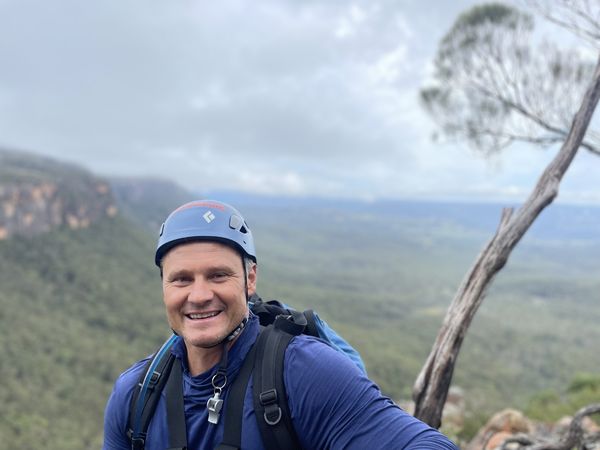There are few paramedics who know better than Jeremy Veness the extent of training required to secure a place on the Central Coast Westpac Rescue Helicopter critical care medical team.
He joined NSW Ambulance in 2004 and worked predominantly in North Sydney before completing his intensive care paramedic course.
From there he transferred to the Central Coast where he completed his special operations training and in 2014 he joined aeromedical and began working with the rescue helicopter.
Veness’s professionalism, experience and knowledge as an aeromedical critical care paramedic (CCP) was soon recognised by NSW Ambulance and he became a paramedic educator.
“I’m a relief paramedic educator in aeromedical, which means I spend half to three quarters of the year as a ‘line CCP’ predominantly at the Belmont base (where the Central Coast rescue helicopter is based) and the other half to quarter working in the Aeromedical Training Department based out of the ACE Training Centre at Bankstown,” he said.
“Hopefully it’s the right balance of staying current as an operational CCP that can still keep me handy and relevant in the training realm.”
The diversity of training includes Ab-Initio for CCPs – clinical, access, rescue crewmen and down the wire training, induction training for new doctor registrars and cyclic training.
Cyclic training is the bulk of the work for the training department, with four cycle blocks in a year.
All critical care paramedics will go to Bankstown for a week at a time, four times a year, to conduct training to remain current in clinical, aviation and access skills as well as be introduced to new skills, equipment and procedures.
“Each cycle block usually has a theme; for example, cycle block one had a paediatric clinical theme, along with a review of certain pharmacologies; aviation training involved water winching and vessel transfers and the access component was vertical mobility and rescue skills,” Veness said.
“I really enjoy the role; it keeps me on my toes and fresh.
“Things are always moving and changing, and this role ensures I stay on top of all the different operational, clinical and access skills the CCP position involves.
“I also get to work with and help facilitate training to a very smart and motivated group of paramedics, doctors and aircrew.”
When he’s not at ACE delivering training, Veness enjoys the opportunity to work locally, providing training to local NSW Ambulance and NSW Health staff, as well as other emergency service providers.
“I assist with the training from Belmont, with ab-initio doctor flight training, water, and vessel recency training for the paramedics out of Lake Macquarie,” he said.
“I also have the opportunity to work with other response agencies like Marine Rescue, NSW Water Police and Newcastle and Lake Macquarie Lifeguards.”




